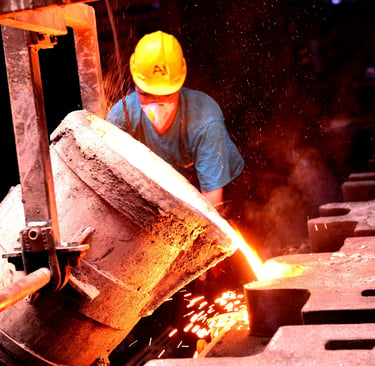From Concept to Casting: How Digital Alloy Design Transforms Metal Component Development
What if you could develop high-performance metal alloys faster, at a lower cost, and with zero trial-and-error? Sounds impossible? Not anymore! With AI-driven alloy optimization, we’re transforming how metal components are designed—achieving superior strength, thermal fatigue resistance, and creep resistance with precision and speed. Curious how digital alloy design can revolutionize your process? Don't miss out! Read the blog below and explore the next era of alloy development.
S.Puchhala
2/10/2025


Developing high-performance metallic alloys has always been a time-consuming and expensive process. Traditional methods rely on multiple casting trials, which increase costs, prolong development timelines, and create uncertainties in achieving the right material properties. But what if there was a smarter way to design alloys?
Imagine significantly reducing alloy development costs and time while achieving key properties such as high thermal fatigue resistance, superior mechanical strength, and exceptional creep resistance at high operating temperatures—without the need for extensive trial and error casting trials.
With the Optimization Workflow, a digital simulation-based approach powered by advanced AI/ML algorithms and standard material databases, alloy compositions can be precisely optimized based on specific performance requirements.
By leveraging virtual alloy simulation tools, this method optimizes chemical elements within predefined limits, sets precise tolerances for casting, and balances trade-offs to identify the most promising formulations. This ensures faster, more cost-effective alloy development with optimized performance.
This data-driven approach eliminates unnecessary casting trials, making end component development faster, cheaper, and more efficient. By leveraging digital metallic material optimization, companies can:
Reduce alloy development costs by minimizing casting trial runs
Shorten time to market by optimizing materials digitally
Enhance performance by targeting specific mechanical properties
Achieve low-cost, high-performance metal solutions
The future of high-performance alloy design is here. With digital alloy simulation, manufacturers and component developers can develop better materials, faster and at a lower cost. Are you ready to grab the next generation of digital metallic material development?
💡 Let’s discuss how this innovative approach can benefit your next project!
